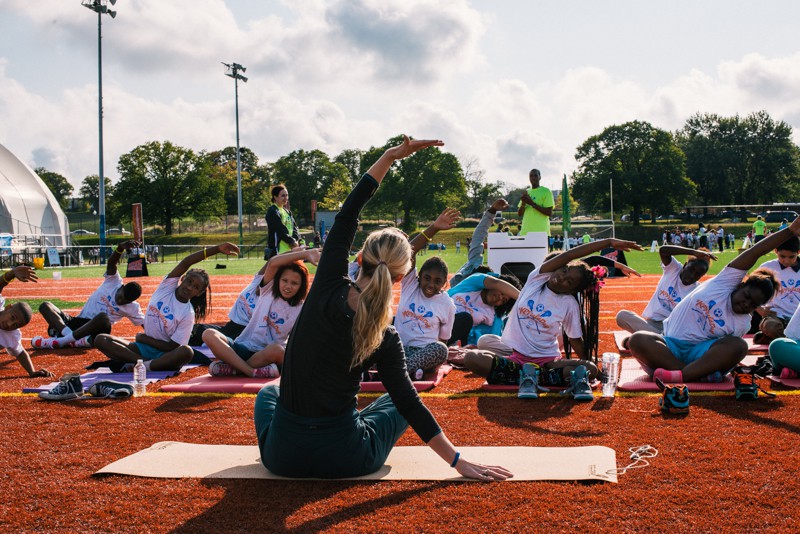6 Tips for Corporate Wellness Success

You’ve probably heard the term “employee wellness” used around your office. Over the last 10 years, employee wellness programs have become more and more popular as employers start to recognize the benefits of having healthier employees.
Obvious paybacks include less sick days, lowers health care costs, and happier employees. And then there’s the allure the programs create when trying to attract talent. And of course the employees themselves enjoy improved personal health and wellness, and the feeling that their employer cares about them.
A win all around, right?
But let’s back up a minute. For the employer, figuring out what types of wellness initiatives will work can be difficult, and can mean investing a significant amount of resources.
For starters, not everyone is going to take advantage of every incentive you offer. But you want to do your best to create something that will support the folks that need the most support, while still engaging and challenging those that maybe don’t need so much.
We manage a wellness program that supports 14 different companies in different buildings, even different cities and states. And we’ve learned quite a lot through trial and error. We’ve seen participation and engagement levels rise and fall. We’ve done surveys, held focus groups, met with loads of experts in fitness… and just as many people who practice the art of avoiding wellness. And we see now – thanks to real feedback and data – that we’ve finally come out on top. In fact, on more than one occasion our initiatives were responsible for saving a person’s life.
So as a team that has tested and been tested by trends, and now knows what works and what doesn’t, we thought the least we could do is share ….
Our 6 Tips for Wellness Success
-
Give Options AND Knowledge
All employees are not created equal. While one might enjoy a weight loss challenge, another might already be at their optimum weight. One may be interested in exploring yoga, and another cardio or kickboxing. If you’re going to offer fitness classes, you’ve got to understand your audience and what they’re looking for. And it’s not just enough to offer a variety of options from yoga, to cycling, to boxing etc. Make sure people are educated about their options. Why kickboxing might make a good option for women worried about bikini season. Why a busy copywriter should take 20 minutes out of his day to meditate.
-
A little FOMO Can Go a Lonnnnng Way
When you give people the opportunity to try something new and exciting once or for a limited time, they’re more likely to take you up on your offer. Not to mention, the same exercise regimen over time becomes less effective (As demonstrated in this article, or this one, or this one…). Try to create unique, interesting experiences through wellness. Move yoga outside to a park when weather permits. Add classes that people haven’t had the opportunity to try before (barre or Cross Fit, for example.) We do quarterly pop-up clinics where folks can do things like get a free 10-minute massage, a free adjustment from a highly regarded chiropractor, or receive a Bod Pod screening.
-
Paint the Whole Picture
Don’t forget that physical health isn’t the only aspect to wellness. The goal is to create and share holistic initiatives that encompass all areas of wellbeing. Supporting mental health can be as easy as encouraging social interactions (yes, happy hour counts as a wellness initiative in our book.) Or coordinating an opportunity to get people out of the office and into the community to give back. Not sure where to start with planning a successful happy hour or group outing? Read this.
-
Get The Boss Involved
Getting people’s attention is one thing… but often not enough. Make sure management’s support of your wellness programs and initiatives is known. You’ll see a better buy in and much better results. Think about the CEO standing in line with everyone else for a free biometric screening. That means something to people. That means “el Jefe” shares some of the same values and concerns everyone else does; that as busy as they are, they’re not too busy to take care of themselves.
-
COMMUNICATE…
It’s easy… and it pays off. By doing things like including information about your wellness program in new hire orientations, creating flyers, developing an internal e-newsletter or even a private Facebook group to support your wellness initiatives, you’re reinforcing your message as an employer that you give a hoot. On top of that, you’re encouraging more organic and healthy interactions, and building engagement. Keep the conversation open, and always remember to give people a point of contact to reach out to if they have questions about the program, new ideas, or the big one… feedback. Feedback is your friend. There are people who are happy to offer their two cents on any topic. But then there are those you never hear from… that smile and nod, take what they’re given and never want to fuss. You want any and all of it. This will only further improve your understanding of what people want and don’t want. You’ll create stronger programming and avoid wasting your time and money.
-
Be A Human
This doesn’t have to be so hard. Step back and think like a human – not an employer or wellness manager. Simple things can make all the difference. If you are going to have a company gym, then make sure it’s 1) accessible, 2) filled with the equipment and resources people really want, and 3) accommodating. Otherwise, discount programs with nearby gyms or studios may be a better direction for you. If you are going to have a health fair, go the extra mile to find vendors that your employees are actually interested in. We’ve even gone as far as to tell our vendors to ditch their uniforms or branded shirts and come in street clothes. If you offer social events or volunteer opportunities, offer them during or right after work. And please… consider the season! Good luck with a weight loss challenge during the holidays. People are stressed, tight on time, tight on money, and surrounded by temptation. It’s the perfect storm. So instead of trying to tell them they need to find time for kettle bells, treat them to a chiropractor or a masseuse. Offer to help people work on their beach bods in the spring. During the summer months, offer a skin scan.








